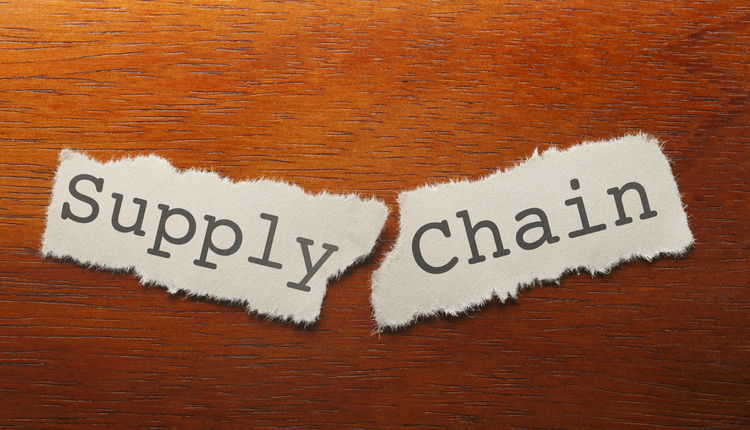As 2011 draws to a close, retailers, suppliers and manufacturers all want to know what the New Year has in store for them. While the U.S. economy continues its tepid recovery, the upcoming presidential election promises to suppress any strong economic rebound.
Here are several key forces to consider when setting a supply chain strategy for 2012.
First, parcel shipment rates are going to go up. FedEx, UPS and the United States Postal Service (USPS) have all announced price increases for 2012 parcel shipping. For ecommerce vendors and other retailers and suppliers who rely on parcel shipments as their main arm of transportation fulfillment, these price increases can be deceptive.
FedEx Express will increase shipping rates by a net average of 3.9% for U.S. domestic, U.S. export and U.S. import services effective January 2, 2012. The full average rate increase of 5.9% will be partially offset by adjusting the fuel price threshold at which the fuel surcharge begins, reducing the fuel surcharge by two percentage points. The FedEx Ground and FedEx SmartPost pricing changes for 2012 will be announced later this year. FedEx Freight implemented a 6.75% general rate increase on September 6, 2011."
UPS announced a rate hike for most of its shipping services, which will take effect Jan. 2, 2012. The new rates represent a net increase of 4.9% over 2011 rates for ground and air shipments, according to UPS. Ground package rates will increase 5.9% less a 1% decrease in the fuel surcharge, and Air services and U.S.-originated international shipments will increase 5.9%, less a 2% fuel surcharge decrease.
U.S. Postal Service has proposed new 2012 shipping rates that are expected to start on January 22, 2012. While the average increase for all shipping classes is 4.6%, proposed rates include the introduction of a new flat rate of $39.95 for overnight express mail boxes weighing up to 70 pounds that are sent domestically; the flat rate for express letters is being increased separately to $18.95. Previously, prices for the overnight service were $13.25 or higher based on package weight and distance. The prices for priority mail, which promises two-to-three-day delivery, also will increase by an average of 3.1 percent.
Because the average ecommerce shipment is between one and three pounds, many shippers may fail to qualify for discounted parcel consolidation services offered by FedEx and UPS. Instead, they end up using costly "retail" services from FedEx, UPS and USPS. For these shipments, the price increase is closer to 6.5 percent, which means that the shipper could be off by as much as 50 percent on the impact of parcel pricing increases for 2012.
It's important to examine and calculate the full impact of these increases in order to ensure that your shipping projections are inline with actual costs. This is especially true for ecommerce vendors who are promoting "free shipping" as a way to differentiate themselves from their competitors.
Beyond the announced rate increases, the three major shipping organizations also face disruptions from the expected USPS switch to a five-day delivery service, federal price collusion investigations and legal complaints against UPS and FedEx.
Five-day delivery for USPS — Congress is expected to approve the plan for the Postal Service to implement five-day delivery and it will probably go into effect in fiscal year 2011. Despite its unpopularity among unions and many democrats, the plan has won the support of President Obama and could generate as much as $3.1 billion in annual savings. There will be no mail delivery to street addresses on Saturday; mail will not be collected from blue street collection boxes or Post Offices on Saturday; nor will there be Saturday pickup of mail from homes and businesses. Express Mail will continue to be delivered six days a week. The new delivery schedule will have a profound effect upon organizations that rely on USPS shipping or a combination of private shipping and USPS shipping.
UPS and FDX's refusal to negotiate with 3rd parties — Parcel shippers UPS and FedEx have been subject to pricing collusion charges. This last year, parcel shipping consultant AFMS LLC filed a lawsuit against both companies alleging that they conspired to fix prices for parcel shipments by shutting third parties out of rate negotiations. The first hearing on the case is set for January 13, 2012.
In summary, both retailers and their suppliers need more aggressive spend management to reduce costs and mitigate risk in shipping. Traditional tactics like invoice auditing and refund recovery are great ways to cut shipping costs in a stable market, but the complexity of today's shipping environment requires a deeper understanding of how to lessen the impact of industry, political and economic forces on corporate spending.
John Haber is the founder and CEO of Atlanta-based Spend Management Experts, which provides retailers, manufacturers and suppliers with technology and services to help keep shipping costs in line.
Here are several key forces to consider when setting a supply chain strategy for 2012.
First, parcel shipment rates are going to go up. FedEx, UPS and the United States Postal Service (USPS) have all announced price increases for 2012 parcel shipping. For ecommerce vendors and other retailers and suppliers who rely on parcel shipments as their main arm of transportation fulfillment, these price increases can be deceptive.
FedEx Express will increase shipping rates by a net average of 3.9% for U.S. domestic, U.S. export and U.S. import services effective January 2, 2012. The full average rate increase of 5.9% will be partially offset by adjusting the fuel price threshold at which the fuel surcharge begins, reducing the fuel surcharge by two percentage points. The FedEx Ground and FedEx SmartPost pricing changes for 2012 will be announced later this year. FedEx Freight implemented a 6.75% general rate increase on September 6, 2011."
UPS announced a rate hike for most of its shipping services, which will take effect Jan. 2, 2012. The new rates represent a net increase of 4.9% over 2011 rates for ground and air shipments, according to UPS. Ground package rates will increase 5.9% less a 1% decrease in the fuel surcharge, and Air services and U.S.-originated international shipments will increase 5.9%, less a 2% fuel surcharge decrease.
U.S. Postal Service has proposed new 2012 shipping rates that are expected to start on January 22, 2012. While the average increase for all shipping classes is 4.6%, proposed rates include the introduction of a new flat rate of $39.95 for overnight express mail boxes weighing up to 70 pounds that are sent domestically; the flat rate for express letters is being increased separately to $18.95. Previously, prices for the overnight service were $13.25 or higher based on package weight and distance. The prices for priority mail, which promises two-to-three-day delivery, also will increase by an average of 3.1 percent.
Because the average ecommerce shipment is between one and three pounds, many shippers may fail to qualify for discounted parcel consolidation services offered by FedEx and UPS. Instead, they end up using costly "retail" services from FedEx, UPS and USPS. For these shipments, the price increase is closer to 6.5 percent, which means that the shipper could be off by as much as 50 percent on the impact of parcel pricing increases for 2012.
It's important to examine and calculate the full impact of these increases in order to ensure that your shipping projections are inline with actual costs. This is especially true for ecommerce vendors who are promoting "free shipping" as a way to differentiate themselves from their competitors.
Beyond the announced rate increases, the three major shipping organizations also face disruptions from the expected USPS switch to a five-day delivery service, federal price collusion investigations and legal complaints against UPS and FedEx.
Five-day delivery for USPS — Congress is expected to approve the plan for the Postal Service to implement five-day delivery and it will probably go into effect in fiscal year 2011. Despite its unpopularity among unions and many democrats, the plan has won the support of President Obama and could generate as much as $3.1 billion in annual savings. There will be no mail delivery to street addresses on Saturday; mail will not be collected from blue street collection boxes or Post Offices on Saturday; nor will there be Saturday pickup of mail from homes and businesses. Express Mail will continue to be delivered six days a week. The new delivery schedule will have a profound effect upon organizations that rely on USPS shipping or a combination of private shipping and USPS shipping.
UPS and FDX's refusal to negotiate with 3rd parties — Parcel shippers UPS and FedEx have been subject to pricing collusion charges. This last year, parcel shipping consultant AFMS LLC filed a lawsuit against both companies alleging that they conspired to fix prices for parcel shipments by shutting third parties out of rate negotiations. The first hearing on the case is set for January 13, 2012.
In summary, both retailers and their suppliers need more aggressive spend management to reduce costs and mitigate risk in shipping. Traditional tactics like invoice auditing and refund recovery are great ways to cut shipping costs in a stable market, but the complexity of today's shipping environment requires a deeper understanding of how to lessen the impact of industry, political and economic forces on corporate spending.
John Haber is the founder and CEO of Atlanta-based Spend Management Experts, which provides retailers, manufacturers and suppliers with technology and services to help keep shipping costs in line.











